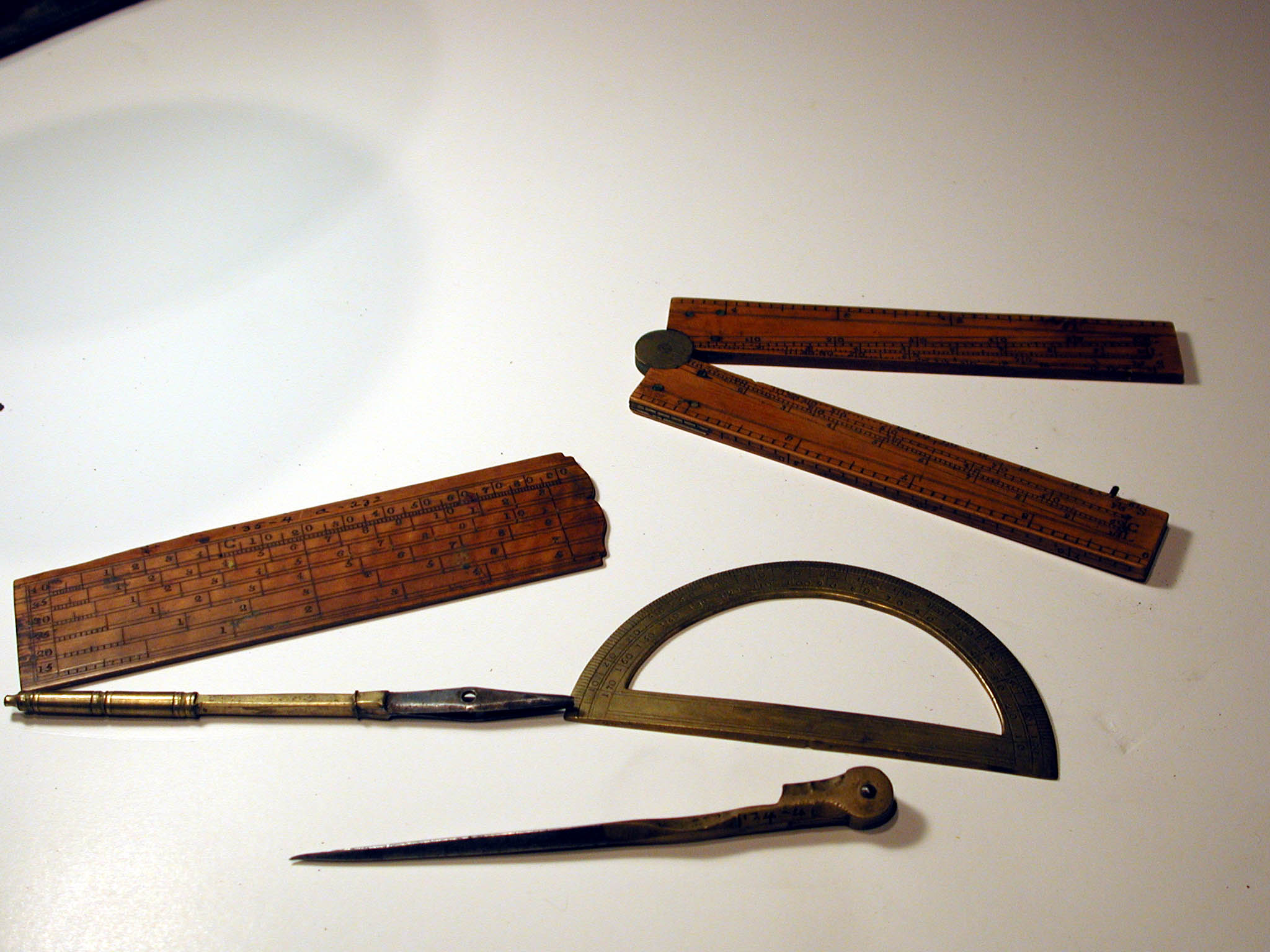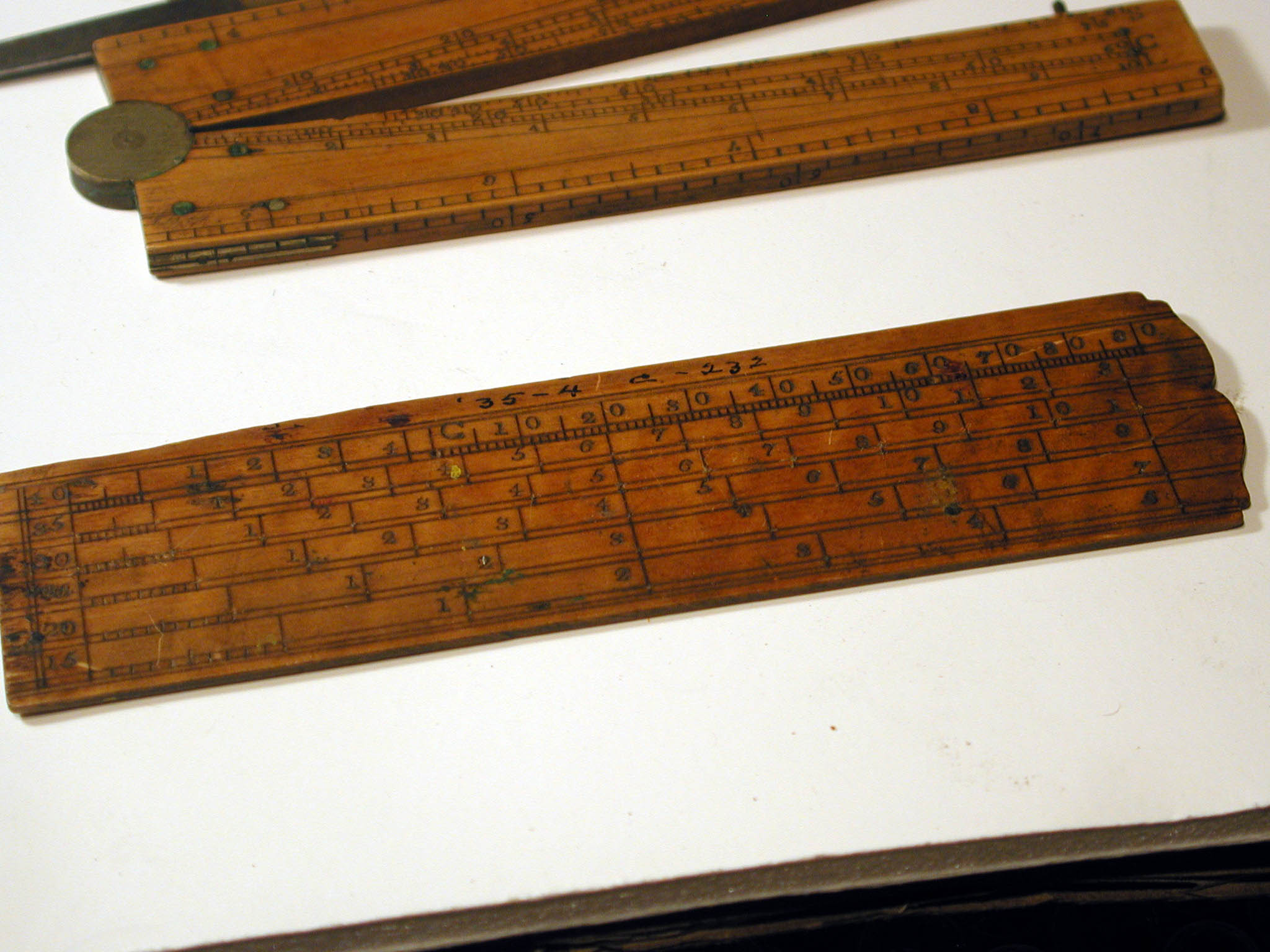 |
(The following information is
from Scientific Instruments 1500 - 1900 An Introduction By Gerard
L'E Turner, Philip Wilson, 1998.)
Sectors were used by navigators, surveyors, gunners and draughtsmen (draftsmen) for calculations. The scales on a particular sector would vary according to its particular use. The sector was in use in England by 1597 for gunnery calculations. Galileo had developed a sector between 1597 and 1599 for use as a general calculator. After 300 years of use, the sector fell out of favor in the mid 1800's. The sector is engraved with scales of various mathematical functions and provides similar information as that of a slide rule. |
 |
All sectors are used in conjunction with a set of dividers. In the picture to the left the sector is at the top, the dividers at the bottom, in between is a protractor, an ink pen to its left, and an unidentfied scale to the far left. |
 |
There are a number of scales that an English sector might have - line of equal parts (L), line of chords (C) used to protract an angle, line of sines (S or Si), line of tangents (T), line of tangents to a smaller radius (t), line of secants(S or Se), line of polygons (P or POL) for inscribing a regular polygon inside a circle of a given radius. Other operations engraved along the edge of the sector would include a line of numbers for multiplication (N or NUM), line of rhumbs for plotting a ships course (R or RH), Longitude (Lon), Latutude (La), Hours (Ho). French sectors would deal with lines, chords, planes, caliber of gun barrels, weight of shot, metals used for weight/volume measurements, and polygons. This particular one has scales labled S,C,L, and POL. The POL scale label is split in half near the small pin at the top of the jaws. |
 |
The scale at left is unidentified. |